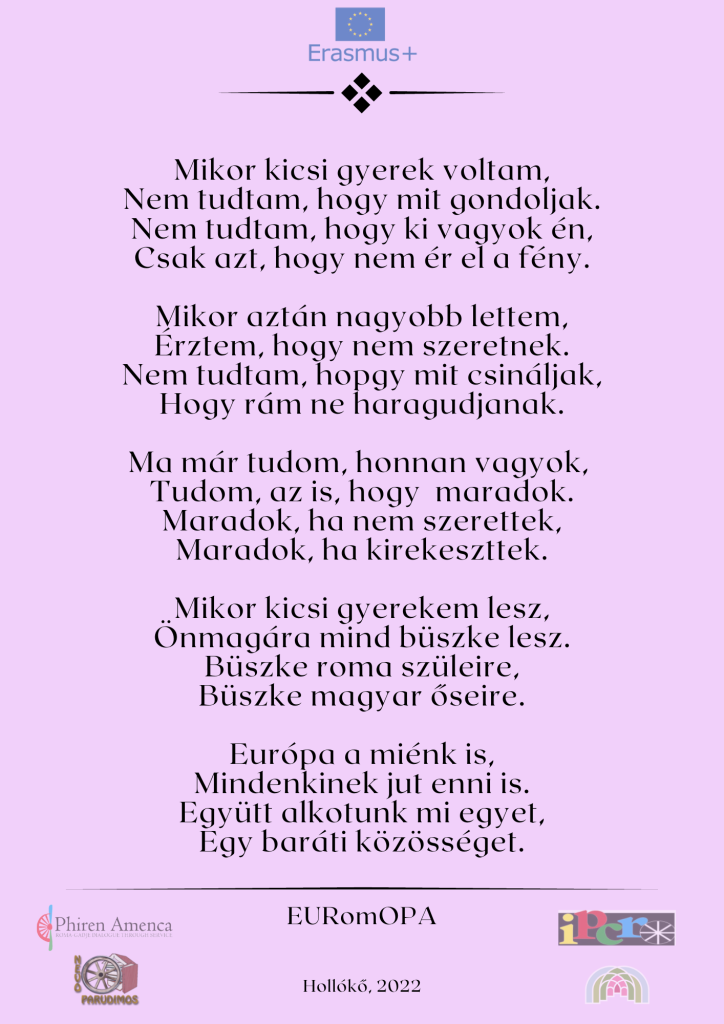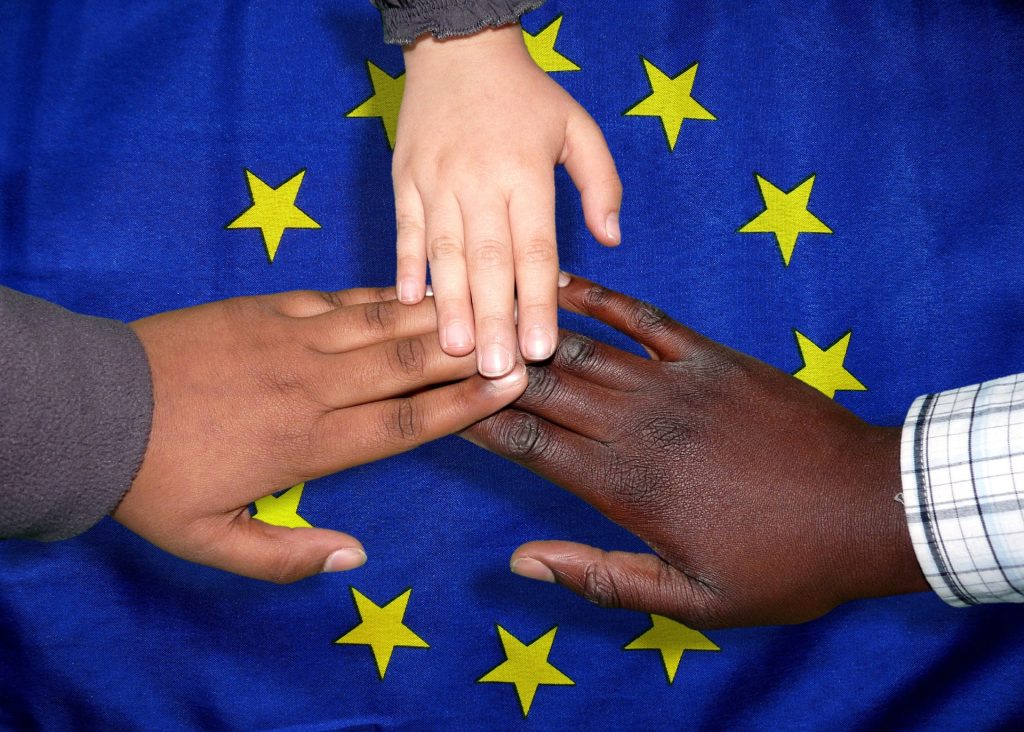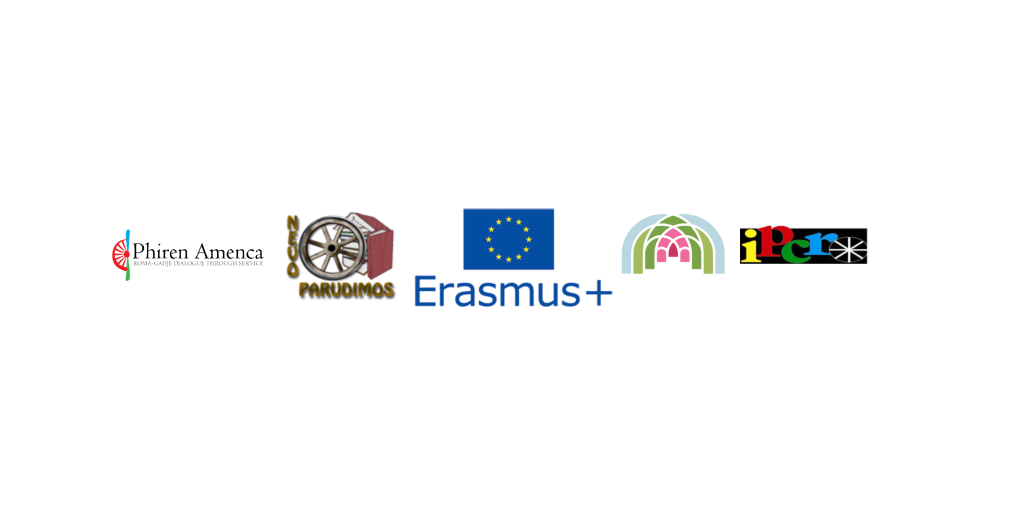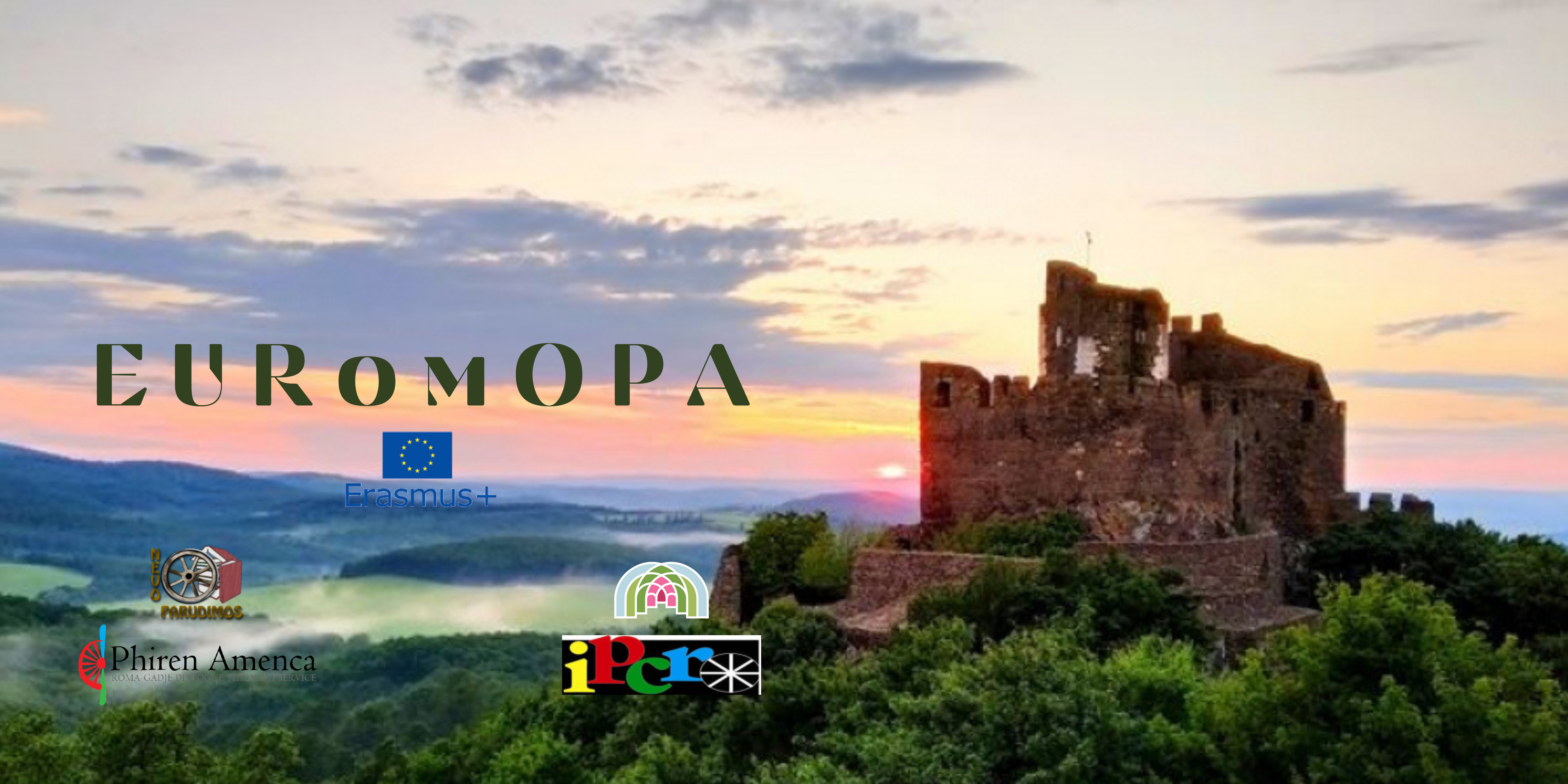Seminar in Hungary for Hungarian speaking Roma and non-Roma youth – October 3-7, Hollókő
25 young Hungarian-speaking Roma and non-Roma young people took part in an Erasmus+ youth exchange organized by RGDTS (Hungary), Nevo Parudimos (Romania), ARCA (Ukraine) and IPCR (Slovakia) between the 3rd and 7th od October, 2022. The participants came form towns and villages close to the Hungarian border and had the the opportunity to participate in a European mobility project, for which their permission is limited due to the low capacity of local organizations, the lack of foreign language skills, and the social and geographical location of the Roma communities.

The aim of the project was to give Roma and non-Roma young people the opportunity to participate in an international mobility project (traveling abroad, building relationships with young people of other nationalities). During the project, the capacities of participating organisations and their smaller grassroots partners were expanded in order to organise and coordinate such projects in the future.
The specific goals of the youth exchange were to
- provide mobility opportunities for Hungarian-speaking Roma and non-Roma youth across the border who do not speak a foreign languages,
- strengthen their European identity,
- strengthen the Roma identity as a European identity,
- get to know the Roma cultures of other countries, and strengthen the sense of community,
- get to know and share the Hungarian-Roma cultures of the Carpathian Basin (customs, food, music, experiences, history)
- build dialogue between Roma and non-Roma youth
- breake down the prejudices of non-Roma youth, strengthening common values
Throughout the week participants learnt about human rights, Roma history and cultures, shared their customs and values and debated about what it means to be Roma, Hungarian, and European.

They turned their thoughts and feelings into photo montages, songs, theater pieces and paintings in small working groups with the help of artists.
Here you can see a video of images.

The project was funded by the Erasmus Plus Programme of the European Union


